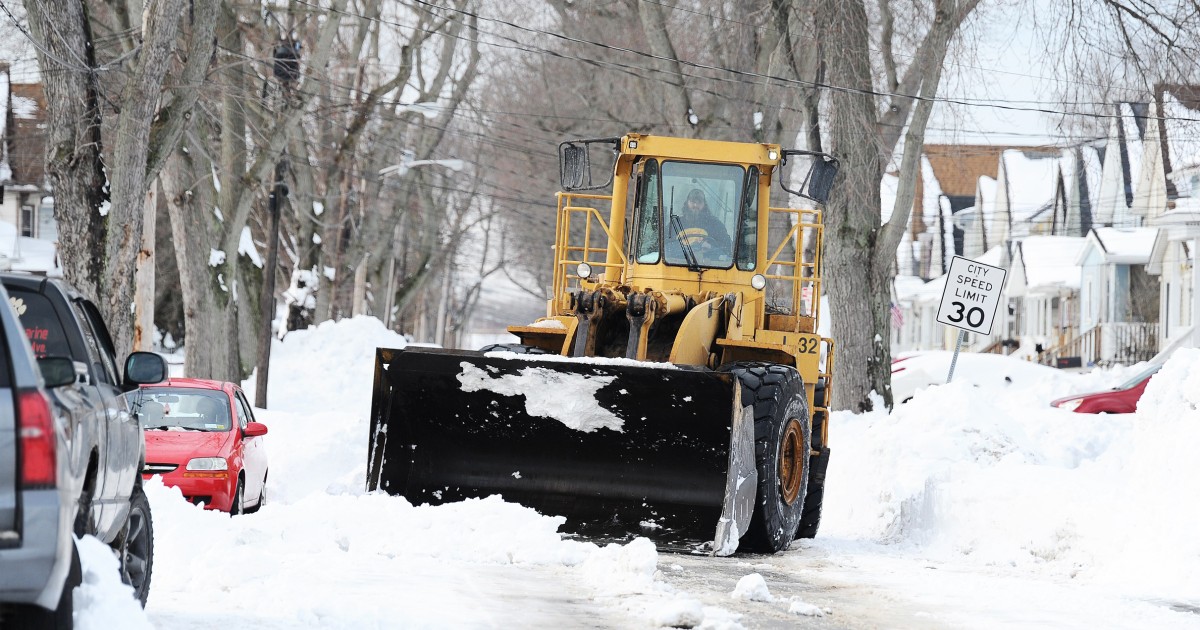Blizzards are the hurricanes of the north. Both blizzards and hurricanes are unstoppable forces that threaten everyone in their path. To expect Buffalo to withstand a blizzard better because it snows a lot is to believe that Seattle can ignore any hurricane simply because it rains a lot there. Blizzards combine deadly cold snow, sustained winds, and blinding whiteout conditions, turning the familiar into a blank, alien landscape that can kill anyone unfortunate enough to get caught in it. A key to preventing such deaths is early decision-making, so recent events in Buffalo create an important moment to reflect on how best to do this in the future.
While we should hold leaders accountable, we should not expect our leaders to personally risk embarrassment by making the safest decisions on our behalf.
Life-threatening emergency conditions are notorious for their tipping points, when things suddenly take a turn for the worse through a cascade of unwanted events. Snow is a great example of this. If the snowplows lose their battle with the storm, we haven’t simply lost emergency services during that storm, we’ve now lost them for days After the storm: When the storm stops, it takes days of heavy, dangerous, non-stop work to unpack snow-blocked streets.
During this time, new chains of bad events threaten to make things worse. For example, the road-clearing fleet is constantly burning fuel, but nearby gas stations can’t provide that fuel when they can’t receive it on the snowy roads the crew is trying to clear. The clock is also ticking for supermarkets, which rely on daily deliveries to keep shelves stocked. The possibility of food shortages, especially in densely populated areas, is a real danger until a minimum number of roads are excavated and made safe for delivery trucks.
Any leader making decisions in an emergency wants to avoid this aggravated harm if possible. Unfortunately, Buffalo lost part of that fight during the December 2022 blizzard, losing dozens of its citizens to the storm and enduring blocked streets for days afterward. Right now, immediately after the storm, it is important to take time to grieve. In the future, it’s important to learn as much as we can from the loss.
To do so, we must recognize a very particular type of decision that leaders often face in emergency situations, a high-stakes choice that must be made early to prevent the first domino from falling and triggering a series of other problems. In Buffalo, that early decision is when to close roads before the blizzard hits. (Mandatory evacuations are another example for other types of emergencies.)
When a snow emergency approaches, why do we close the roads? To keep them open. In the face of epic snowfalls, most city snowplows can plow snow faster and stay in the fight longer if they don’t get stuck behind smaller vehicles struggling in the same conditions. Keeping the roads open means emergency services can respond during the storm, including utility crews fighting power outages, and everyone is back on the road immediately afterward. Keeping smaller vehicles off the roads also keeps drivers safe inside, away from blinding blizzard conditions.
The Buffalo experience unfortunately shows the alternative scenario. Up to this point, 40 people in the whole area they are known to have been lost in this blizzard. Four were found stranded in their cars and 17 were found out in the open, presumably leaving behind a stranded vehicle or struggling on foot because they couldn’t free their vehicle to drive somewhere they thought they needed to be. At least three people died because an ambulance could not reach them, and Another 11 died in their homes. as power failed and utility crews were unable to respond.
It’s easy to say now that the roads should have been closed sooner. But that decision was not so easy due to the enormous costs that such a closure entails, especially if the emergency does not materialize as planned. Remember, the emergency itself is a runaway condition: Like any weather system, the blizzard could have reeled away from Buffalo and made its way through forests and farmland to the south.
Anyone who announced a driving ban in the city just to watch the storm recede would be responsible for shutting down the region’s economy during some of the busiest shopping days of the year and tearing apart loved ones trying to gather for the holidays. Christmas celebrations. Human nature alone suggests that the decision-maker might hesitate, even before acknowledging that this person is often an elected official whose job depends largely on staying popular.
What is the solution? We must depersonalize such decisions if we want better results in the future. While we should hold leaders accountable, we should not expect our leaders to personally risk embarrassment by making the safest decisions on our behalf. Consequently, we depersonalize such decisions by turning them into pre-programmed rules of thumb that we do not deviate from once established.
For example, we all agree that driving bans go into effect at a certain time before the projected arrival of a snowstorm of a certain probability of severity, based on data from an agreed source, such as the National Weather Service. Emergency managers, analysts, and policy makers take enough time in non-emergency conditions to identify, discuss, and finalize the exact amount of time and precise probabilities, but then the rule is established and everyone knows it. If a given storm heads south, in retrospect, blocking city driving «for no reason», it’s not the fault of the decision maker, it’s just the rule.
And by “we” I mean each and every one of us. This protect first decision system that blocks a domino-like cascade of damage doesn’t work unless we all pause in our normal lives and recognize this particular feature of emergencies. In other words, we need to support and follow the rule that the first domino holds, for ourselves and our communities.

